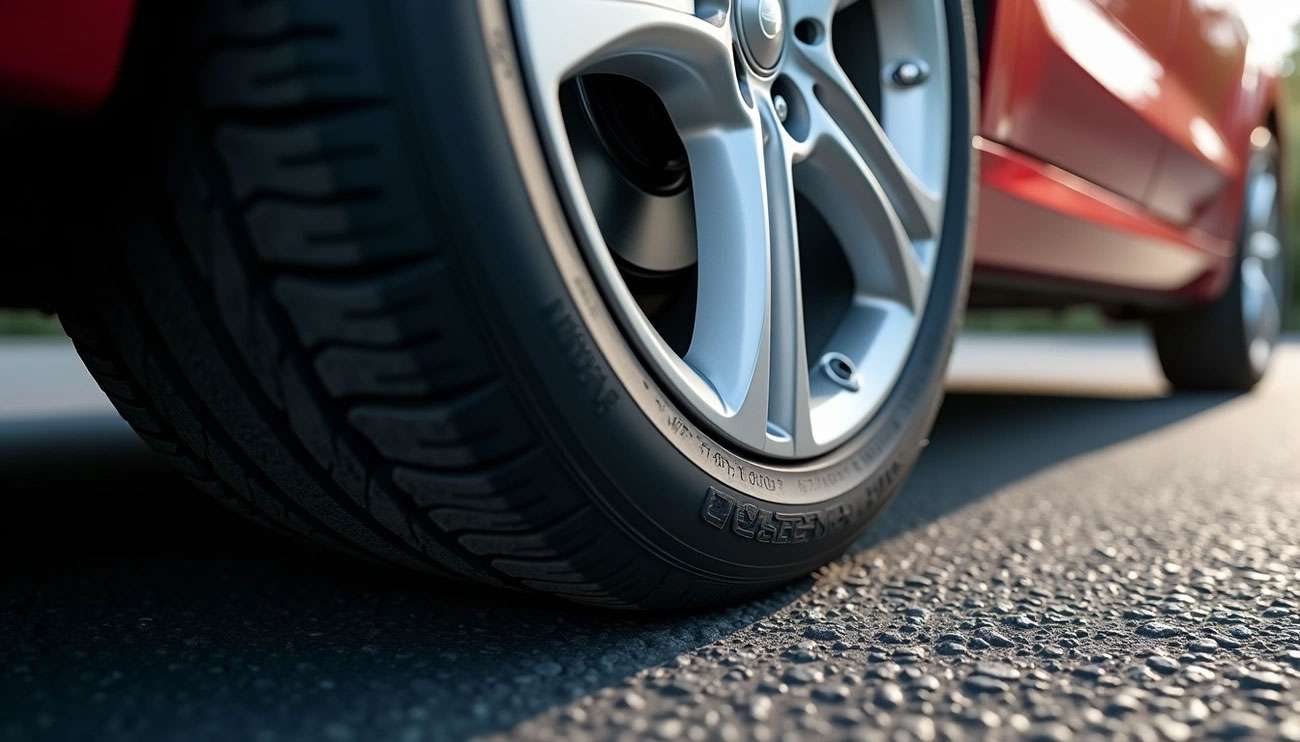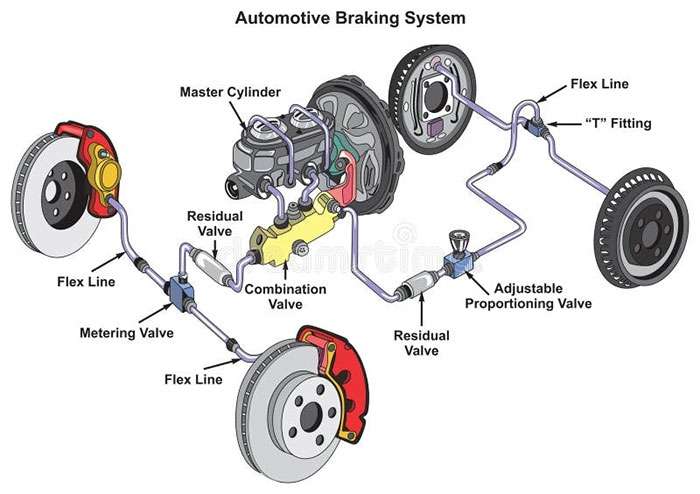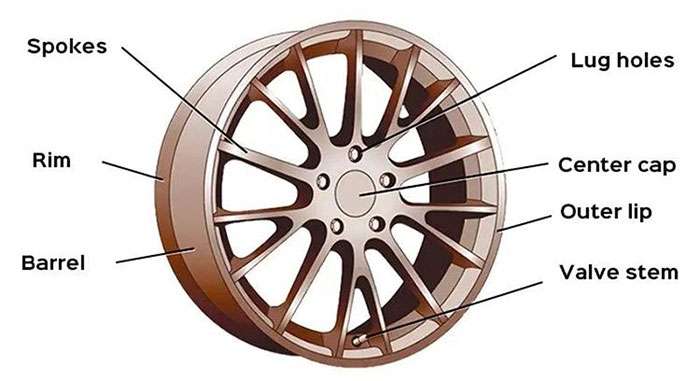
Standard tires contain about 1,400 cords, each one capable of resisting a force of 33 pounds. Most vehicle owners use the terms wheel and tire interchangeably, but understanding the wheel vs. tire distinction is essential for making smart maintenance decisions and getting the best performance from your vehicle.
At Performance Plus Tire, we know that wheels and tires serve completely different purposes. Tires are built with five main components: tread, sidewall, body ply, belt, and bead. Wheels provide the structural foundation where tires mount securely. The bead creates that critical connection point where the tire anchors to the wheel rim. Getting the car wheel vs tire vs rim relationship right means better performance, safer driving, and smarter purchasing decisions.
We'll break down exactly how these components differ, show you what's inside each one, and explain how they work together to keep you moving safely on the road. Understanding these basics helps you choose the right products and maintain them properly for maximum value and performance.

Image Source: Dreamstime.com
Most people confuse these terms when talking about their vehicles, but wheels, tires, and rims are three completely different components with specific jobs to do.
Tires are pneumatically inflated structures made from synthetic rubber, natural rubber, fabric, wire, and carbon black. They're the only part of your vehicle that actually touches the road, creating what's called a "contact patch" – typically no larger than the size of your hand. This small contact area absorbs shock from rough surfaces and provides all the traction you need for acceleration, braking, and cornering.
Wheels are the entire metal structure that bolts to your vehicle's hub through the axle. Most wheels are constructed from pressed and welded steel or lightweight metal alloys like aluminum or magnesium. Wheels serve as the structural foundation that connects your tires to the vehicle and supports the full weight of your car or truck.
The rim specifically refers to the outermost circular edge of the wheel. This U-shaped component holds your tire securely in place and creates an airtight seal to maintain proper inflation. When rims get damaged from curb hits or road hazards, you'll notice immediate problems – from flat tires to poor handling and annoying vibrations in the cabin.
Getting these relationships right becomes crucial when you're buying new tires or wheels. The wheel size and rim width directly determine what tire sizes will fit properly on your vehicle. Choose the wrong combination, and you'll end up with poor performance, handling problems, or even safety issues on the road.
Modern tires feature a sophisticated five-layer design, each component engineered for specific performance requirements. Understanding this structure helps you recognize signs of wear and make informed replacement decisions.
Starting from the outside, the tread makes direct contact with the road surface. Special tread patterns and rubber compounds provide crucial traction for acceleration, braking, and cornering. Different tread designs excel in different conditions - deep grooves for wet weather, aggressive patterns for off-road terrain, or smooth racing compounds for maximum grip on dry pavement.
The sidewall extends from the tread shoulder down to the bead. This flexible section prevents air from escaping while protecting internal components from road hazards. Look for tire specifications printed on the sidewall - size, load rating, and speed rating information that determines compatibility with your vehicle.
Beneath the tread, steel belt layers provide rigidity and stability. These strong steel cords enhance shape retention, reduce rolling resistance, and increase mileage performance. Performance tires often include jointless cap plies made of nylon that enable safe travel at high speeds.
The textile cord ply forms the tire's internal framework or carcass. Usually made from polyester or rayon, this layer controls internal pressure and maintains the tire's shape under load.
At the innermost layer sits the inner liner made of butyl rubber. This airtight seal maintains proper inflation - critical for performance and safety. When pressure drops below recommended levels, higher tire temperatures develop that shorten lifespan and increase fuel consumption.
For expert advice on selecting the right tire structure for your driving needs, visit Performance Plus Tire.

Image Source: Automotive Prototype | Custom Auto Parts Manufacturing
Wheel engineering affects every aspect of how your vehicle handles, stops, and performs. Each wheel component works together to support your vehicle's weight and directly influence driving dynamics.
The hub connects your wheel to the vehicle's axle and houses critical components like brake pads and rotors. Spokes extend outward from the hub to the rim, providing the structural integrity needed to handle road forces. The rim includes the barrel, flanges, and beads, with flanges acting as the outer edges that keep tires securely mounted.
Material choice makes a significant difference in performance. Alloy wheels made from aluminum or magnesium weigh considerably less than steel alternatives, which improves acceleration and fuel efficiency. Adding just 10 pounds of wheel weight increases your stopping distance by approximately 1%. Alloy wheels also dissipate heat more effectively, preventing brake fade during heavy use.
Wheel size affects how your vehicle handles on the road. Larger wheels can improve stability but may compromise ride comfort. The weight distribution creates what engineers call "rotating mass," which substantially influences braking performance. For every 10% increase in wheel diameter, the braking force required increases proportionally.
Understanding these factors helps you choose wheels that match your driving needs. Whether you prioritize performance, comfort, or fuel efficiency, the right wheel structure makes a measurable difference in your vehicle's capabilities.
For expert guidance on selecting wheels that optimize both structure and performance for your specific vehicle, visit Performance Plus Tire.
Smart vehicle maintenance starts with knowing the difference between wheels and tires. These components work as a team - tires handle road contact and shock absorption, while wheels provide the structural support that connects everything to your vehicle. When you understand how they function together, you make better purchasing decisions and get more value from your investment.
Knowledge of tire construction helps you spot wear patterns early and choose replacements that match your driving style. Similarly, understanding wheel components like rims, spokes, and hubs shows you why material choices matter. Alloy wheels deliver better fuel economy and braking performance compared to steel alternatives. These details directly impact your vehicle's efficiency and safety.
Your driving experience depends on these components working properly together. Performance Plus Tire offers expert guidance on selecting the right wheel and tire combination for your specific needs. Our team can help you balance factors like performance, durability, and budget to find the perfect match for your vehicle.
The next time someone confuses wheels and tires, you'll know they're talking about two completely different components - one providing structure, the other creating contact - both essential for safe, efficient driving.
Understanding the fundamental differences between wheels, tires, and rims helps you make better maintenance decisions and ensures optimal vehicle performance and safety.
• Tires are the contact point: Only tires touch the road through a contact patch no larger than your hand, providing traction, shock absorption, and braking capability through their multi-layer rubber construction.
• Wheels provide structural support: The entire metal structure (hub, spokes, rim) connects tires to your vehicle's axle, with material choice significantly impacting performance and fuel efficiency.
• Weight matters for performance: Adding just 10 pounds of wheel weight increases stopping distance by 1%, while alloy wheels offer better acceleration and heat dissipation than steel alternatives.
• Tire structure affects safety: Five main components (tread, sidewall, body ply, belt, bead) work together to maintain proper inflation, shape retention, and road contact for safe vehicle operation.
• Proper sizing is crucial: Wheel size and rim width directly determine compatible tire sizes, affecting everything from handling dynamics to ride comfort and braking performance.
When these components work harmoniously together, they create the foundation for safe, efficient vehicle operation that directly impacts your driving experience and maintenance costs.
A tire is the rubber component that makes contact with the road, providing traction and shock absorption. A wheel is the metal structure that supports the tire and connects it to the vehicle's axle.
The wheel's structure, including the hub, spokes, and rim, affects vehicle dynamics. Lighter alloy wheels can improve acceleration and fuel efficiency, while wheel size influences handling and stability.
A tire consists of five main components: tread, sidewall, body ply, belt, and bead. Each layer serves a specific purpose, from providing road grip to maintaining shape and ensuring proper inflation.
Yes, tire and wheel sizes should be compatible. The wheel size and rim width determine the appropriate tire size. Mismatched sizes can lead to poor performance, handling issues, and potential safety risks.
Wheel weight significantly impacts vehicle performance. Adding just 10 pounds of wheel weight can increase stopping distance by approximately 1%. Lighter wheels generally improve acceleration, fuel efficiency, and overall handling.